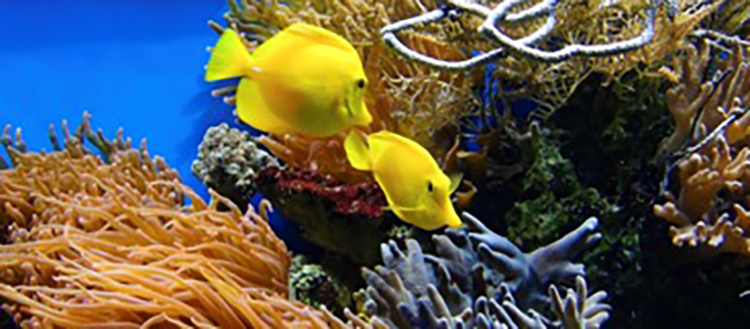Rare species organize themselves into ghettos to survive
Researchers from UNIGE and Uméå show that to resist stronger species, rare animal and plant species group together in ghettos to help each other, maintaining biodiversity.

Corals are part of the communities studied that organize themselves into ghettos.© Bruno Glätsch
How can you survive when your species has few representatives? An international team of researchers, led by the Universities of Umeå (Sweden) and Geneva (UNIGE, Switzerland), demonstrates that animal and plant communities are organized into ethnic neighbourhoods, where species in low abundance come together to strengthen their persistence against more competitive species. The highlighting of this exceptional ecological model, illustrated by more than 300 ecological communities around the world, is the main conclusion of a study published in Nature Ecology & Evolution on biodiversity in competitive environments.
“Animal and plant communities are organized into ethnic neighbourhoods, as can sometimes be found in some large megacities,” says Joaquin Calatayud, a researcher at Umeå University in Sweden, who led the research. This organization could explain the persistence of rare species over time, as it would help them escape the pressure of stronger competitors, either through cooperation between rare species or through the use of different micro-habitats.
Scientists analyzed more than 300 communities of mosses, plants, insects or corals in various regions of the world. By combining network theory and numerical simulations, they detected ghettos and explored the mechanisms behind these distributions. Their results show that the spatial clustering of low abundance species increases their persistence. “For example, coral reefs on Tykus Island (Indonesia) show the general pattern observed in 90% of the biological communities analysed in this article”, explains Jaime Madrigal-Gonzalez, a researcher at the UNIGE Forel Institute. “On this island, Montipora digitata, a species of cnidaria, is the most dominant and abundant species on the coral reef. It is accompanied by rare species, such as the branched fire coral or the coral-mushroom shield. To avoid being eliminated by the dominant species, these rare corals form small associations and tend to grow one beside the other.”
A biodiversity that against Darwin
How come is biodiversity maintained in environments where competition is fierce? “Indeed, according to Darwin’s theory, rare species should be excluded by more efficient species in highly competitive environments”, explains Markus Stoffel, professor at the Department F.-A. Forel for Environmental and Aquatic Sciences of the Faculty of Science of the UNIGE. However, it is known that ecological communities are formed by multiple rare species. This study thus offers a first explanation capable of solving this major Gordian knot of current ecological sciences.
These results can have a profound impact on our understanding of how ecological communities are assembled. Among their many applications, the experts highlight conservation strategies or research on human diseases related to intestinal microbiotes, where the coexistence of species is crucial. “Nevertheless, the specific mechanisms leading to groups of rare species remain unknown, we still need to dig”, concludes Markus Stoffel.
